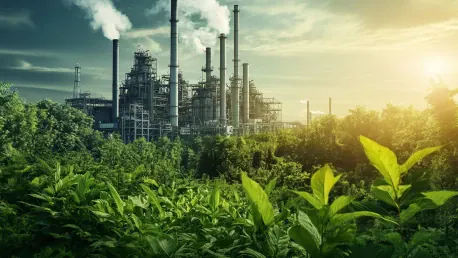China’s rapid expansion in green manufacturing, particularly in the sectors of solar power, electric vehicles (EVs), and lithium batteries, has led to substantial overcapacity, sparking a global debate on its broader implications. While Western nations have responded with protectionist measures such as tariffs, many developing economies view this surplus as an opportunity to accelerate their own renewable energy infrastructure development. Overcapacity in an industry occurs when the production output surpasses market demand, leading to an excess of goods. In China’s green manufacturing sector, this situation has been fueled by substantial government subsidies that have driven rapid expansion. The result has been an abundance of solar panels, electric vehicles, and lithium batteries that exceed current market needs. The excess supply often leads to significantly lower prices on the global market, creating intense competition for local industries in other countries.
Understanding Overcapacity in Green Manufacturing
Western nations, primarily the US and EU, have responded to China’s overcapacity in green manufacturing by imposing tariffs on Chinese-manufactured EVs, lithium-ion batteries, and solar cells. These protectionist measures are intended to shield local industries from being outcompeted by the influx of lower-priced Chinese goods, which are seen as benefiting from unfair trade practices due to significant government subsidies. The tariffs are justified by the need to rectify market imbalances and protect jobs in local industries that may otherwise suffer from the competitive edge held by Chinese products.
However, these measures have resulted in polarizing opinions. Critics argue the effectiveness and potential consequences of such tariffs, suggesting they may lead to higher consumer prices and hinder the broader adoption of green technologies. There is also concern about the possibility of trade wars and strained international relations, which could complicate global efforts to transition to renewable energy. The protectionist stance taken by Western nations highlights the tensions and competing interests in the global economic landscape, particularly concerning the development and distribution of green technologies.
Western Reactions and Protectionist Measures
The debate over China’s green overcapacity extends beyond economic concerns, as it encompasses the broader implications for global energy transitions and sustainability. Developing economies, especially those within the Global South, see China’s surplus as a strategic advantage to bolster their own renewable energy frameworks. Countries in regions such as Africa perceive the availability of affordable green technologies from China as a golden opportunity to meet their low-carbon energy requirements.
By importing these cost-effective green technologies, developing nations can fast-track their renewable energy projects, gaining immediate benefits for their local infrastructure. For instance, the influx of Chinese solar panels has already begun to transform energy landscapes in various African countries. This trend underscores the potential for increased cooperation and technological integration between China and developing economies, which can lead to enhanced renewable energy capabilities and foster local economic growth.
Opportunities for the Global South
The Global South’s engagement with China’s green overcapacity highlights the possibility of forming joint ventures and relocating production facilities. This approach can assist developing regions in building their renewable energy capacities while simultaneously addressing China’s overproduction issues. By fostering a collaborative environment, both China and these developing nations can work towards mutual benefits that support global sustainability aims.
Chinese authorities and economists argue that the issue of overcapacity is largely a consequence of weakened cyclical demand rather than mere overproduction. They emphasize the growing global demand for low-carbon technology and project significant growth in EV sales and solar power components over the coming decade. This perspective aligns with the International Energy Agency’s (IEA) predictions of substantial future demand increases for green technologies. As global energy transition goals evolve, China’s current overcapacity could prove instrumental in meeting these needs.
China’s Perspective on Overcapacity
China’s ambitious targets for solar power and overall renewable energy expansion further support the idea that current overcapacity might align perfectly with future market demands. The IEA forecasts a considerable rise in the global demand for electric vehicles, solar photovoltaic systems, and batteries, a projection that resonates with China’s production capabilities. As demand for green technologies continues to grow, the existing surplus in China’s manufacturing sector could play a crucial role in satisfying these needs.
This potential future demand growth underscores the necessity for strategic planning and international cooperation. Aligning production capabilities with global energy transition goals can help address overcapacity issues while supporting sustainable development across nations. Collaborative efforts between China and other countries can pave the way for a more balanced and efficient global market for green technologies.
Global Demand and Future Projections
Experts suggest that integrating China’s surplus production into global supply chains can benefit the Global South by meeting their renewable energy demands. By relocating production to resource-rich regions like Africa, a sustainable solution can be devised to address cyclical market demand fluctuations. This approach not only helps manage China’s overcapacity but also promotes local economic development in partner countries.
Partnerships and technology transfer initiatives can empower developing countries to build their industrial capacities and enhance their renewable energy infrastructure. This collaborative strategy can yield mutual benefits, accelerating global low-carbon transition goals. For instance, the Forum on China-Africa Cooperation (FOCAC) emphasizes the importance of integrating industrial capacities and green energy solutions within developing economies, showcasing the potential of such partnerships.
Resource Optimization and Global Supply Chains
The growing trend towards fostering partnerships between China and the Global South can facilitate technology transfer, economic development, and mutual benefits in achieving energy transition goals. Collaborative projects, supported by policy frameworks and financial investments, are essential in overcoming infrastructural bottlenecks and investment hesitations.
By working together, China and developing economies can create sustainable economic growth pathways to address overcapacity challenges. Policy recommendations include implementing a “Green Development Plan” for the Global South—resembling the Marshall Plan—that fosters South-South cooperation and expands technology transfer initiatives. By investing in renewable energy manufacturing and forming joint ventures with Chinese companies, developing economies can build robust energy infrastructures that support sustainable growth.
Technological and Economic Development Partnerships
In conclusion, China’s green manufacturing overcapacity presents both challenges and opportunities on a global scale. The protectionist measures adopted by Western nations highlight concerns over market imbalances and unfair trade practices, while developing economies see a chance to advance their renewable energy infrastructure through affordable technology imports. The strategic relocation of production lines to resource-rich developing countries can balance supply and demand while supporting sustainable development goals.
China’s current overproduction, viewed through the lens of future global energy demands, suggests that this surplus could be beneficial in the long term. As global energy needs continue to grow, integrating China’s production capabilities into international supply chains can play a key role in meeting these demands. Collaboration and strategic planning are essential to harness these opportunities and support sustainable development across regions, particularly for developing economies in the Global South.









